How does pomelo grow and where, what kind of fruit is it, its qualities, calorie content
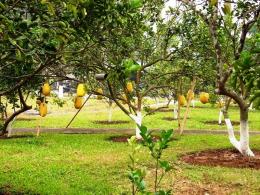
The pomelo fruit belongs to the citrus family and is the largest member of this family. It has appeared relatively recently in supermarkets and markets; some people confuse pompelmousse with grapefruit.
To avoid such confusion, you need to figure out what kind of product this is, how pomelo grows, and how to use it correctly.
Content:
- Pomelo - what is it, a hybrid of what, what was crossed with what
- How a pomelo grows, what a tree looks like, life expectancy
- Where is it grown?
- How a pomelo blooms, what its fruits look like, what they are like inside
- How to choose a ripe pomelo
- What are the benefits of pomelo fruits, what taste do they have?
- How to eat pomelo correctly
- Calorie content of fruit, its use in dietary nutrition
- Are there any contraindications for use?
- Application in cosmetology environment
Pomelo - what is it, a hybrid of what, what was crossed with what
Some people, out of ignorance, believe that pomelo is a hybrid species, since it appeared by crossing grapefruit or orange. But that's not true. Pompelmus is not a hybrid, but an independent fruit.
It looks similar to grapefruit, there is the same white layer inside the pulp, this is explained by the fact that grapefruit was obtained by crossing an orange and a pomelo.
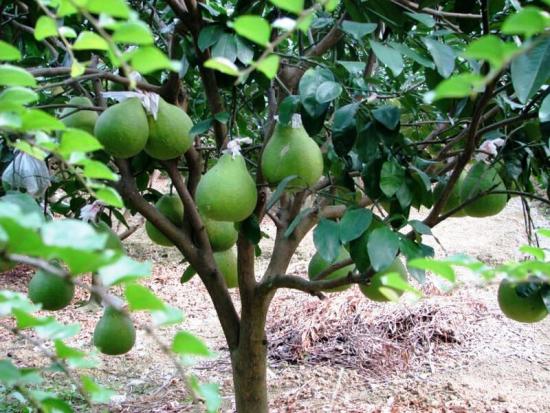
This fruit has healing and cosmetic properties, so it is widely used in medicine, cooking and cosmetology.
How a pomelo grows, what a tree looks like, life expectancy
Pomelo is an evergreen tropical tree.
Its main characteristics:
- In good conditions the tree reaches 15 meters in height. The crown has a spherical shape, the branches are long, and there are sharp thorns.
- The leaves are oval-shaped, quite large, the top of the leaf has a rich green color, and the bottom is a little lighter in color.
- The diameter of the inflorescences is from three to seven centimeters, resembles a six-pointed star, the color is white. Flowers can bloom singly or in inflorescences of six, maximum ten pieces.
The tree is a heat-loving plant; the optimal temperature for it is considered to be from twenty-five to thirty degrees. The plant prefers sandy soils that contain a sufficient amount of salt.
If the soil does not contain salt, then you should water the tree with sea water.
Where is it grown?
This citrus crop was originally grown in India, Fiji, Thailand, Indonesia, California, Malaysia, the Caribbean Islands and Florida.
Not long ago, flower growers learned to grow exotic fruits in our country, at home. However, in order for the product to retain its beneficial and tasteful qualities, it is necessary to create a hot and humid climate, typical for pomelo.
To do this, the crop must be placed in the open sun, watered abundantly and the air humidified.
On video about where pomelo grows and how to get its fruits in an apartment:
How a pomelo blooms, what its fruits look like, what they are like inside
The tree blooms with white star-shaped flowers. In one season, inflorescences are formed several times. Thanks to this, the yield increases; with proper care, you can harvest the fruits four times a year. The largest number of fruits can be collected in early February and until the end of March.
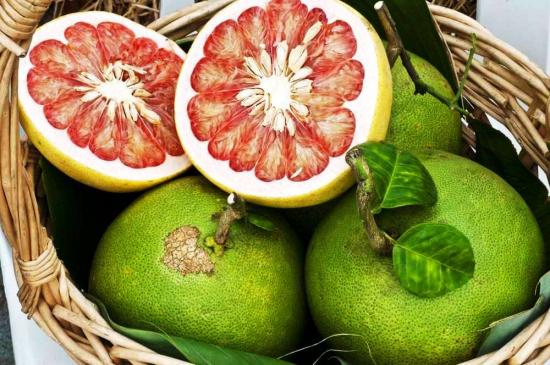
Pomelo fruits are similar to grapefruits, differing only in size.
The weight of one fruit reaches 10 kilograms, and the volume reaches 30 centimeters. If you grow a pomelo outside its native conditions, then the fruit will weigh a little more than one kilogram, with a diameter of 15 to 20 centimeters.
The fruit is round in shape, in rare cases it becomes pear-shaped. There is a thick peel, which is covered with a white layer inside. The peel may be pink, green or yellow. It all depends on how long the fruits were in the sun. The sunny side has a more saturated color.
The inner part is divided into segments, there is a small amount of seeds, and the flesh is red or yellow. The taste of the berry is bitter. Color and shape vary depending on the variety and ripeness of the product.
How to choose a ripe pomelo
The fruit has a specific taste, and if you choose a green product, you may not like it at all.
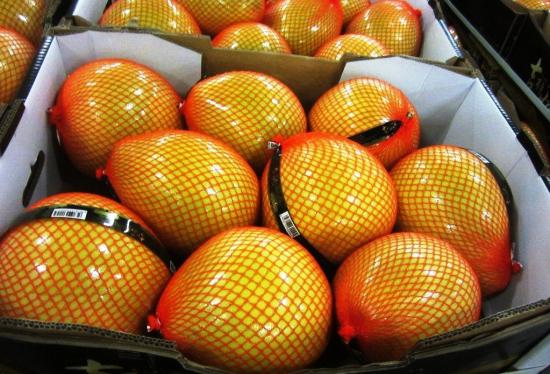
When purchasing, you need to pay attention to the following nuances:
- Aroma. A ripe pomelo will have a rich smell, its aroma will be felt over a long distance.
- Weight. The heavier the fruit, the juicier it is.
- Skin. If there are growths or various seals on the peel, the product was stored incorrectly and this may affect our taste data. If the skin is damaged, dented or wet, this indicates deterioration and rotting. Ideally, the skin should be elastic and have a lively shine.
- Hue. It can be green or yellow, the main thing is that the color is uniform and the same on both sides.
In large shopping centers, the fruits are sold in opaque wrappers to prevent the product from drying out. But some sellers use this method to hide the unripe fruit.You can tear the film a little and check the quality of the product.
What are the benefits of pomelo fruits, what taste do they have?
Not everyone knows about the benefits of pomelo, although in fact its healing properties have been known since ancient times. The Chinese used this fruit as a treatment for heart disease, asthma and colds.
The positive effect came soon, so the Chinese and Hindus began to bring pomelo to the gods and use it in their religious ceremonies, considering it sacred.
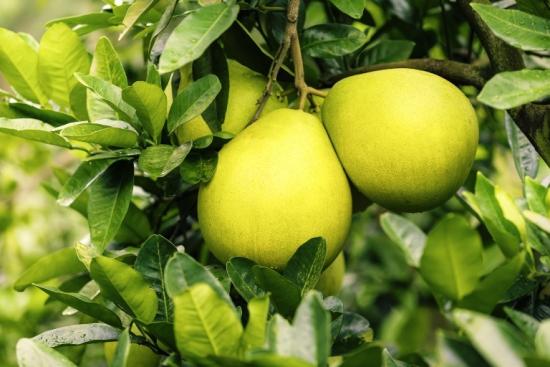
The low calorie content allows the product to be included in the diet menu; the fruit is used for weight loss. The composition contains a lot of sugar, so it allows you to quickly get rid of hunger without adding excess weight.
The product contains fiber, which promotes intestinal health and speeds up the metabolic process.
The pulp contains calcium, so these fruits are recommended for people with joint and bone diseases.
The composition contains a lot of ascorbic acid and essential oils, which are necessary to support the immune system. The body develops resistance to many bacteria, infections and diseases.
The oil also has a positive effect on the central nervous system and acts as a sedative and antidepressant.
It was recently discovered that the fruit contains substances that are necessary to prevent cancer and can destroy existing malignant formations. The substances also have a positive effect on vision and prevent the development of cataracts.
Freshly squeezed juice lowers blood pressure, reduces cholesterol, breaks blood clots, and is a good preventive measure against atherosclerosis.
In addition, the fruits are often used for:
- treatment of cough, bronchial asthma;
- eliminating cramps and pain in the abdominal area;
- treatment of intestinal infections;
- to relieve intoxication after alcohol;
- normalize the menstrual cycle and the production of female hormones.
Despite the large list of positive properties and pleasant aroma, not everyone likes pomelo. There is bitterness and astringency, but this can be removed if the fruit is consumed with sugar, honey or other ingredients.
We invite you to watch a video about pomelo fruits and their benefits:
How to eat pomelo correctly
Usually this citrus is eaten raw. To do this, you need to peel it and divide it into slices. It is important to thoroughly clean off the thin white layers, as they often cause a bitter taste in the mouth.

In many countries, the fruit is used to prepare meat, fish dishes and salads, and added to liquid dishes, such as soup. The product is fried in vegetable oil and cut fresh. Based on it, food acquires a sweet and sour taste and rich aroma.
Calorie content of fruit, its use in dietary nutrition
Pomelo is famous for its low calorie content. There are no more than 30 kilocalories per 100 grams of product. This is an ideal option for dietary nutrition.
Pomelo helps quickly break down fats and proteins. The nourishing pulp allows you to forget about the feeling of hunger for a long time.
Thanks to this fruit, you don’t have to exhaust yourself with different diets and fasting. It is enough to eat up to 200-300 grams of product for lunch several times a week. There are many interesting and tasty low-calorie dishes, you can use various ideas.
Are there any contraindications for use?
Any product has its pros and cons, pomelo is no exception.For some diseases, you need to eat it with caution, or avoid it altogether.
Due to the large amount of acids, it is worth limiting consumption to people who have high acidity, stomach ulcers or diseases of the gastrointestinal tract.
Contraindicated for nephritis and hepatitis.
All citrus fruits are strong allergens, so you should exercise caution during breastfeeding and pregnancy.
Application in cosmetology environment
The exotic fruit is very popular in cosmetology; its juice helps restore the skin.
For example, if you wipe the skin with natural concentrated juice, this will eliminate its oiliness. If the juice is diluted, it helps well with dry skin.
You can make masks and scrubs based on pomelo.

Here are some recipes.
Scrub:
- To prepare the composition you will need half a lemon and a pomelo skin.
- Mix ingredients with olive oil and sugar.
- Apply the scrub onto the body using rubbing movements for 15 minutes.
- Rinse off with a contrast shower.
Mask for oily skin:
- You will need one slice of the product and a teaspoon of kefir.
- Grind the slice until juice appears, add kefir and stir.
- Dip a cotton pad into the prepared mixture and apply to the skin.
- After 15 minutes, rinse your face with water.
In a couple of days, the skin will become fresher, acquire a natural shine and beauty.
So, pomelo is a very healthy exotic fruit. If you haven't tried it yet, now is the time to do so. The main thing is to make sure that there are no contraindications in your case.







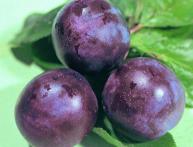
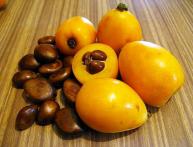
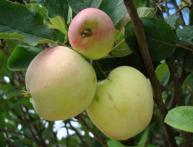

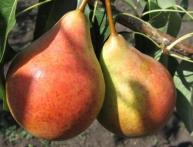
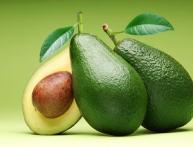


Comments
An exotic fruit for everyone. I bought it once or twice, the price was not expensive, I didn’t really like it. It tastes bitter. Reminds me of grapefruit.Still, I prefer ordinary oranges, tangerines, lemons, that is, not hybrids.
An exotic fruit for everyone. I bought it once or twice, the price was not expensive, I didn’t really like it. It tastes bitter. Reminds me of grapefruit. Still, I prefer ordinary oranges, tangerines, lemons, that is, not hybrids.
Two of my friends used pomelo to lose weight, and the result was small. But then it became known that these fruits often contain many pesticides, especially those imported from China. They immediately stopped eating them. I’ve never tried pomelo and I don’t want to anymore).